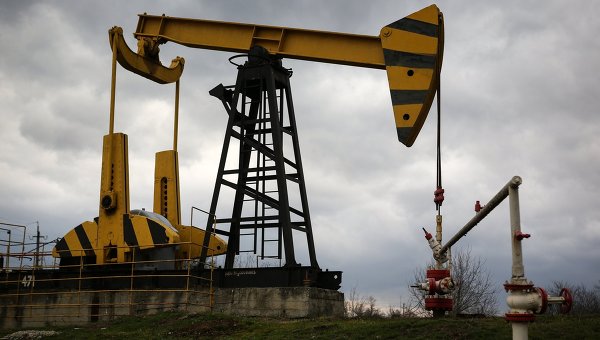BAKU, Azerbaijan, Dec.4
By Leman Zeynalova – Trend:
Oil market is expected to get back to surplus in 2020, Trend reports citing Fitch Solutions Macro Research (a unit of Fitch Group).
“On the whole, we forecast net supply growth of 1.7 million b/d y-o-y for 2020, which sits in stark contrast to the 700,000 b/d contraction we estimate for 2019. This will tip the market back into surplus, leading to a build-up of inventories and y-o-y declines in the oil price,” the company said in its report.
This month Fitch Solutions continues to hold to its current forecast for Brent crude to fall from an average of $64 per barrel in 2019, to $62 per barrel and $58 in 2020 and 2021, respectively.
“Economic and trade activity should stabilize in 2020, although any marginal recovery in demand as a consequence, will prove insufficient to propel prices higher, in light of sharp acceleration in global supply growth. 2019 marked the nadir for oil demand, reflecting global macro headwinds and a host of idiosyncratic barriers to growth in key markets. Global demand contracted by 2 percent y-o-y in the first eight months of 2019, after registering growth of 1-2 percent in the previous two years,” said the company.
China’s oil demand growth has been lacklustre in 2019, against a backdrop of slowing economic growth and re-escalating trade war with the US, according to Fitch Solutions.
“Fuel demand growth in China has averaged 0.1 percent y-o-y over 2018 - M919 , the slowest pace on record. Diesel demand, a rough barometer of industrial and manufacturing strength, has been sluggish in both China and the US. A potential boost from the introduction of IMO 20 20 low sulphur shipping fuel rules could be more muted than previously believed, as alternatives to marine gas oil (diesel) such as VLSFO, gain prominence, stalling the expected dies el uptake increase. In 2020, economic and trade activity should stabilize and a number of the more localized drags on demand will fade. Oil demand growth will start to recover, albeit remain weak in historical terms. The big question mark surrounds the fate of trade talks between US-China.”
The company believes that any marginal recovery in demand will prove insufficient to propel prices higher, in light of sharp acceleration in global supply growth.
“OPEC+ will likely roll over its production cut deal to the end of 2020, but deeper cutbacks seem unlikely. Overall compliance has generally held up, albeit mostly due to Saudi Arabia. On the surface, OPEC has put on a unified front, reaffirming commitment to output management, although cracks may start to appear, as Riyadh attempts to shore up compliance across several lagging members. The upcoming OPEC general meeting is days away and should provide more insight into the scope of production cuts going forward.”
Added to this, as the company expects, the bulk of output losses due to US sanctions on Iran and Venezuela have already been incurred, with little further downside next year.
“Indeed, the combined output by the two countries have declined by some 4 9 percent, or equivalent to more than 2.7mn b/d, since the start of 2018. Spare capacity held by OPEC (inclusive of outages in Iran and Venezuela) has averaged 4.7mn b/d in 2019 , compared with 2.9mn b/d in 2018. A substantial portion of these barrels can be quickly returned to market, should coordinated output cuts or sanctions ease. Such threat of ‘returnable barrels’ is likely to prove a drag on both prices and sentiment in 2020.”
Given the above, there will be no ‘OPEC offset’ to the gains in non-OPEC supply, led by the US, Brazil, Guyana and Norway, according to Fitch Solutions.
“US shale growth is slowing, led by decelerating growth outside the prolific Permian. Growth outside the basin has slowed to 7 percent over the second half of 2019, compared with 12 percent over H119 and 17 percent in 2018. While further slowdown is likely to be in play over subsequent quarters, any slowdown in itself will not be sufficient to restore market balance.”
---
Follow the author on Twitter:@Lyaman_Zeyn






